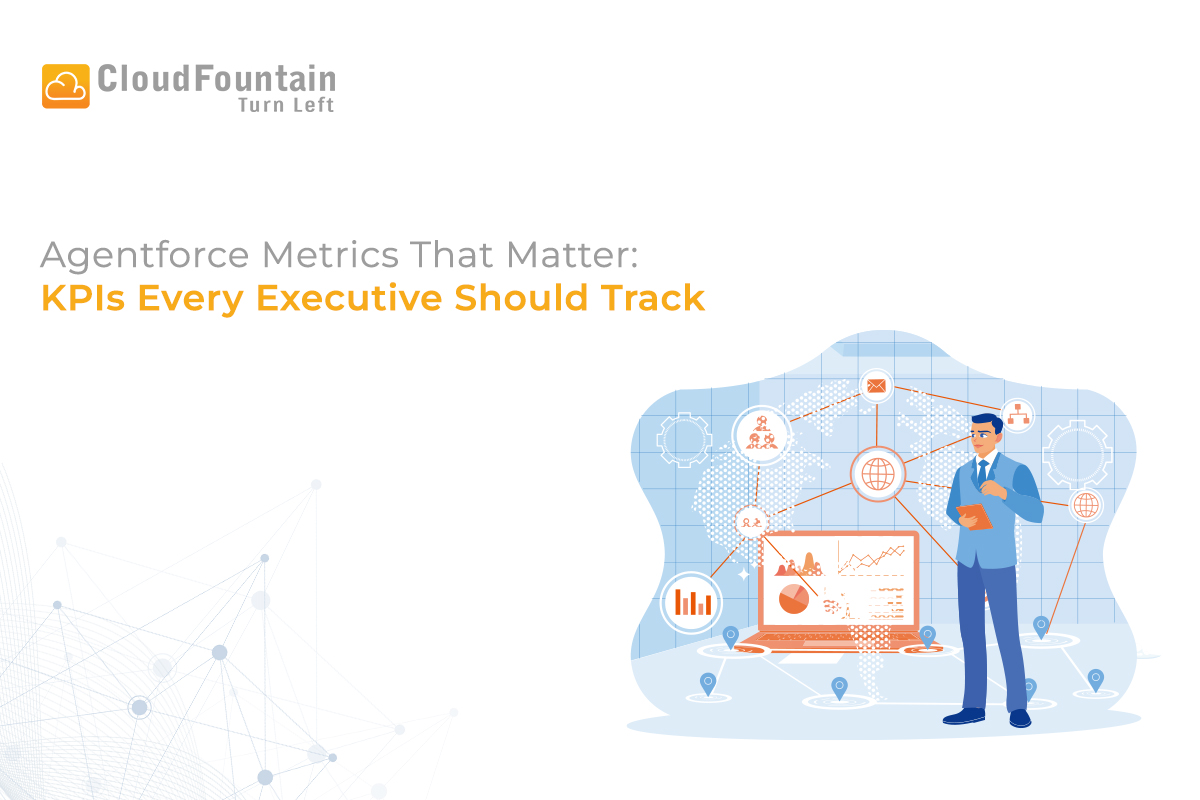In today’s competitive business environment, customer service is a critical differentiator. For executives and managers, the challenge lies in ensuring service teams consistently deliver outstanding customer experiences while optimizing efficiency and costs. Salesforce’s Agentforce offers powerful tools to streamline customer service operations, but its true potential lies in leveraging the right metrics to drive continuous improvement.
In this blog, we’ll explore the key performance indicators (KPIs) specific to Agentforce, how to interpret them, and how data-driven insights can optimize service operations.
Why KPIs Matter in Customer Service
KPIs are more than just numbers—they’re actionable insights into how effectively your customer service operates. For executives, these metrics provide a clear view of performance, areas of improvement, and opportunities for strategic decision-making. Agentforce, with its robust reporting and analytics capabilities, makes tracking these KPIs seamless.
Agentforce-Specific KPIs Every Executive Should Track
| KPI | What it is | Why It Matters | How to interpret it |
| First-Call Resolution (FCR) Rate | The percentage of customer issues resolved during the first interaction without the need for follow-ups. | A high FCR rate is a strong indicator of agent effectiveness and customer satisfaction. | Low FCR rates may point to gaps in agent training, insufficient resources, or complex workflows that need simplification. |
| Case Escalation Rate | The percentage of cases that require escalation to higher-tier support or management. | High escalation rates may indicate that agents lack the tools, training, or authority to resolve issues independently. | Analyze the types of cases being escalated. Recurrent themes may signal a need for better knowledge management or process redesign. |
| Agent Productivity | Measures how efficiently agents handle cases, often calculated as the number of cases resolved per hour or per shift. | Productivity directly impacts operational efficiency and customer response times. | Compare productivity metrics with customer satisfaction (CSAT) scores to ensure efficiency doesn’t come at the cost of quality. |
| Customer Satisfaction (CSAT) Score | A measure of how satisfied customers are with the support they received, typically collected through post-interaction surveys. | High CSAT scores correlate with customer loyalty and positive brand perception. | Use feedback from low scores to identify and address service pain points. |
| Average Handle Time (AHT) | The average time an agent spends resolving a case, including call time and follow-up activities. | A balance is crucial—short AHTs indicate efficiency, but overly brief interactions may compromise quality. | Combine AHT with FCR and CSAT to determine whether shorter handle times align with effective and satisfying resolutions. |
| Service Level Agreements (SLAs) Compliance Rate | The percentage of cases resolved within the timeframes defined in your SLAs. | SLA compliance ensures customer trust and aligns service delivery with contractual obligations. | Frequent SLA breaches may indicate resource constraints, inefficient workflows, or unrealistic SLA commitments. |
| Omnichannel Engagement Metrics | Tracks interactions across multiple channels (e.g., phone, email, chat, social media). | Understanding channel preferences and performance ensures a seamless customer experience. | Identify underperforming channels and invest in optimizing agent training or technology for those touchpoints. |
| Knowledge Base Utilization | Measures how often agents and customers use self-service knowledge articles. | High utilization rates indicate a well-designed and valuable knowledge base that reduces case resolution time. | Low utilization suggests a need to improve content relevance or ease of access. |
Using Data-Driven Insights to Optimize Operations
- Trend Analysis
Regularly track and compare KPIs over time to identify trends. For example, a gradual decline in FCR could signal growing complexities in customer issues or insufficient training. - Actionable Feedback
Use customer feedback collected alongside CSAT scores to pinpoint specific service gaps and tailor improvement initiatives. - Predictive Analytics
Leverage Agentforce’s AI capabilities to predict case volumes, identify potential bottlenecks, and proactively allocate resources. - Continuous Training
Insights from KPIs like escalation rates and FCR can highlight skill gaps. Regular agent training aligned with these insights ensures a well-prepared support team. - Balanced Scorecard Approach
Balance operational efficiency metrics (like AHT and agent productivity) with customer-centric metrics (like CSAT and FCR) to ensure service excellence without compromising quality.
Conclusion
In the age of data-driven decision-making, KPIs are the foundation for optimizing customer service. Agentforce’s advanced capabilities empower executives and managers to track, interpret, and act on these critical metrics with ease. From improving agent productivity to enhancing customer satisfaction, the right KPIs unlock the path to service excellence.
At CloudFountain Inc., we help organizations implement and customize Agentforce to maximize the value of these KPIs. Let us guide you in leveraging data-driven insights to transform your service operations and achieve measurable business success.
Ready to take your customer service metrics to the next level? Contact CloudFountain Inc. today!

